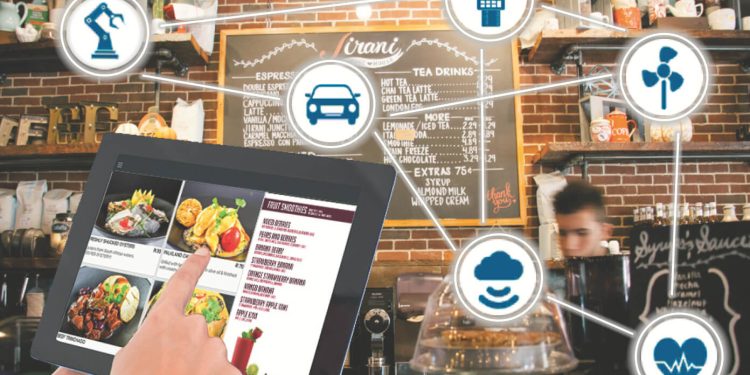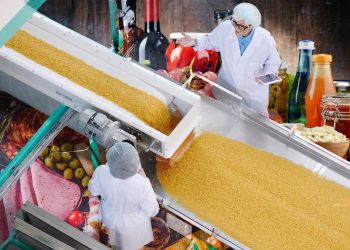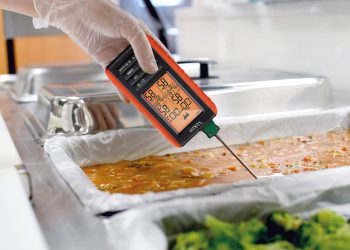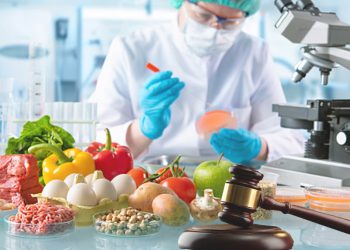IoT has become a transformational technology for the Food and beverages industry throughout the past decade. Embedded with sensors, software, and other technologies, it has become an indispensable tool for gathering and exchanging data across the supply chain.
Forward-thinking F&B businesses are already looking ahead to leveraging this technology on a large scale. IoT in F&B is projected to reach $8.43 billion by 2025.
IoT in the Food & Beverages sector is creating a vast range of opportunities for businesses. In this article, we have discussed the most significant ones.
Benefits of IoT in Food & Beverages Industry
Better Food Safety
Food safety is a critical concern for the F&B industry to curb risks and prevent harm to customers. IoT enhances food safety in the following ways:
- Different types of sensors are used to monitor temperature, vital production state, and shipping time.
- Food safety staff can closely monitor food safety data points, thus ascertaining effective cold chain management.
- Supply chains can function in accordance with global and local regulations.
- Manufacturers can get access to data insights that enable them to apply food safety solutions.
Reliable Logistics
The F&B industry deals with highly perishable items, so they need a very efficient and reliable supply chain and logistics process. Here’s how IoT ensures a smooth logistics process:
RFID (Radio Frequency Identification) tags and GPS systems can effectively monitor the distribution chain throughout the storage and shipping course. By leveraging these technologies, companies can also know customer preferences to reduce wasteful expenditure and better reply to market requirements.
With the help of RFID tracking technology, manufacturers can gain visibility into the food supply chain to effectively monitor conditions for better output. Products can be tracked while in transit using GPS technology.
More Transparency
Customers want to know where their food is coming from and what its ingredients are before tossing items into their cart. Therefore, product and brand transparency are essential pillars of the F&B industry. Here’s how IoT ensures transparency and traceability in F&B supply chains:
- IoT can provide product provenance, i.e., trace a product to its origin.
- It can check if products are being stored and handled correctly.
- It improves the efficiency and quality of communications between all the parties in a supply chain.
- It enables customers to track the entire supply chain readily.
More Efficient Production
Production is one of the most crucial stages in the F&B sector. If all the steps are not adequately monitored and controlled, it can lead to spoilage, and several issues down the line, such as – product recalls. IoT makes the production stage more efficient and smooth in the following ways:
- Video and thermal sensors collect the product data through different stages of its cycle.
- Each step can be monitored to check if product attributes are within the specified range.
- Manufacturing equipment can be instrumented and monitored for better quality control.
- Quality can be gauged on a real-time basis.
Reliable Storage
Storage of perishable items to make them last longer is one of the biggest concerns of the F&B industry. Here’s how IoT enables better storage of food items.
IoT-enabled remote monitoring systems can prompt supervisors to take action if the temperature or humidity fluctuations are recorded. The connected devices record data about the following parameters:
- Temperature
- Pest activity
- Humidity
- Water leaks
- Door/unit status
- Gate status
- And others
Better Inventory management
As the inventory stock is perishable in this industry, it is imperative to have the right food inventory technologies in place. Besides, F&B is a very regulated industry. Therefore, heightened measures need to be put in place to ensure safety. IoT is helpful in these two areas as well.
- Goods can be tracked at every touchpoint of the supply chain.
- Using the IoT inventory system, manufacturers can track the most critical elements of supply chains.
- Data from IoT systems can be used to predict a business’s future inventory needs.
- Companies can efficiently meet customer demands and minimize delays.
- Products can be transported to shelves quicker, so they are still fresh for customers.
Wastage Reduction
Food Wastage is a big issue. A recent study reveals that about a third of human food production goes to waste every year. With the help of IoT solutions, the tides could soon be turned.
- When attached to food items, IoT systems enable complete real-time visibility of the entire supply chain, preventing food damage and wastage.
- Sensors will allow farmers to control the growing conditions of different crop items to prevent bad crop quality.
Concluding lines:
Embracing IoT has several benefits, including – improved production efficiency and reduced costs. As it continues to expand its applications territory into the foreseeable future, now is the best time to think about how your business operations can benefit from it.







